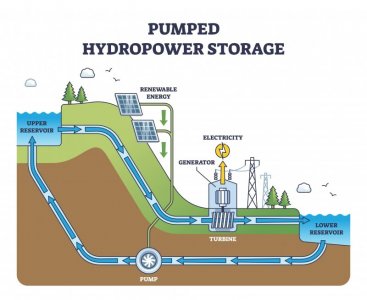JBR
Senior Member
"Gravity batteries". The limitation of a number of sources of renewable energy — solar, wind, tidal, some forms of biomass — is that in many instances these cannot deliver electricity continually. Storing energy during a source's high-delivery periods, for substantial contribution to the grid when most required, can obviously offer advantages.
Conventional electricity storage in lithium batteries is very familiar to us and much depended upon. Lithium batteries are obviously useful, but they wear out, there are occasional flammability issues, and refined-lithium supply chains can become precarious.
But there are several ways by which ever-present gravity can be utilized to store and deliver electricity to the grid. With some systems, the research & development has been going on for a long time. If you're a bit curious about the different approaches, maybe skim this article... if you're really interested, you might read the whole thing.
Conventional electricity storage in lithium batteries is very familiar to us and much depended upon. Lithium batteries are obviously useful, but they wear out, there are occasional flammability issues, and refined-lithium supply chains can become precarious.
But there are several ways by which ever-present gravity can be utilized to store and deliver electricity to the grid. With some systems, the research & development has been going on for a long time. If you're a bit curious about the different approaches, maybe skim this article... if you're really interested, you might read the whole thing.
Last edited:



